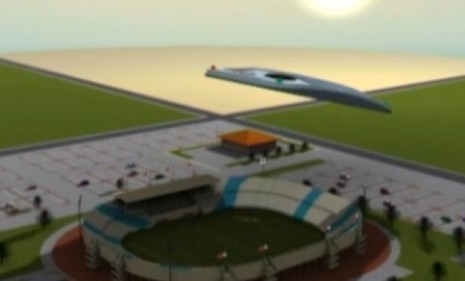Qatar's remote-controlled clouds
To prepare for the 2022 World Cup, a Qatari engineer develops plans for an artificial cloud system to keep soccer fans in the shade. How would it work?

When Qatar was announced as the host of the 2022 World Cup, a prime concern for fans was the Middle Eastern nation's crippling summer heat. The average August high in Qatar is 105 degrees, not exactly ideal weather for playing (or spectating). But Saud Abdul Ghani, an engineer at Qatar University, may have found a solution fans will be happy with. Here, a brief guide to his breakthrough:
What is this thing?
Quite literally, it's an artificial cloud that would hover over a soccer stadium, protecting fans from the heat. (See a rendering of the cloud here.)
The Week
Escape your echo chamber. Get the facts behind the news, plus analysis from multiple perspectives.

Sign up for The Week's Free Newsletters
From our morning news briefing to a weekly Good News Newsletter, get the best of The Week delivered directly to your inbox.
From our morning news briefing to a weekly Good News Newsletter, get the best of The Week delivered directly to your inbox.
How would it work?
The cloud would be built of light carbon, and would carry a giant envelope filled with helium gas. The fake cloud would be manipulated by a remote control, and would use four solar-powered (of course!) engines for maneuvering between the stadium and the sun, to block direct light and provide shade.
That sounds expensive. How much would it cost?
Right now, it's an estimated $500,000 per cloud. That's actually "pretty inexpensive... when you take into account how much money is swishing around Qatar these days," says Nicholas Deleon at CrunchGear. Plus, it's "impressively low" for "technology of this magnitude," says Glenn Davis at SportsGrid. And Ghani says the cost will decrease when the artifical clouds become commercially available. Then, he says, they could be used at beaches, parking lots, or other shadeless areas, and may even be controlled by cellphones in the future.
A free daily email with the biggest news stories of the day – and the best features from TheWeek.com
Sources: Who Ate All The Pies, CBS News, USA Today, CrunchGear, SportsGrid


